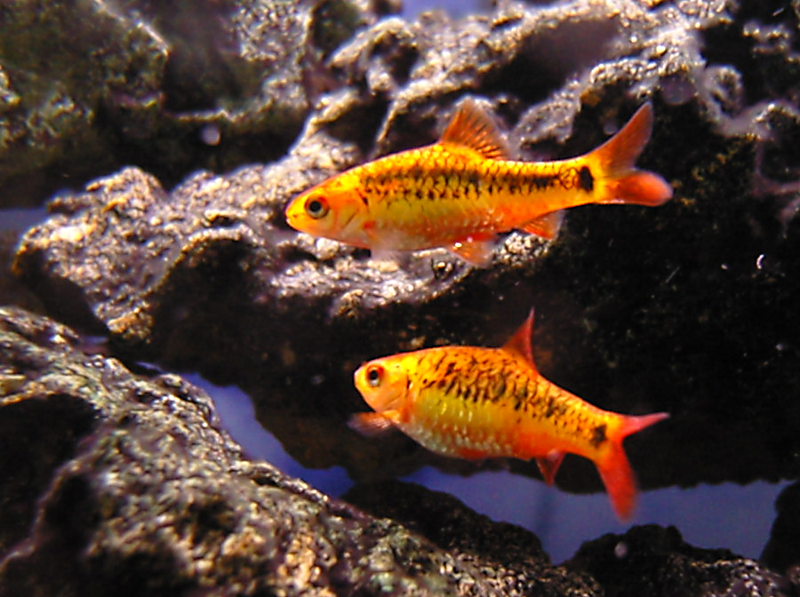 Hello, Frank Indiviglio here. Many fishes that we tend to think of as “tropical” actually inhabit quite cool waters in the wild, and adapt readily to both heated and unheated aquariums. The popular Gold Barb (Puntius semifasciolatus), also known as the green or China Barb, for example, is equally at home at 62 or 75 F.
Hello, Frank Indiviglio here. Many fishes that we tend to think of as “tropical” actually inhabit quite cool waters in the wild, and adapt readily to both heated and unheated aquariums. The popular Gold Barb (Puntius semifasciolatus), also known as the green or China Barb, for example, is equally at home at 62 or 75 F.
Cool water fishes present us with a whole new area of fish keeping. Many hail from tropical countries, yet frequent waters of 60-75F and fare well at normal room temperatures, without a heater, in captivity. As an added bonus, seasonal fluctuations in room temperature may stimulate reproduction.
Natural History
The Gold Barb ranges from southeast China to northern Vietnam and Laos, with introduced populations established in Hawaii, Singapore and elsewhere.
The wild form is greenish-yellow with black bars, but the captive-produced gold strain is more commonly seen. Females are the larger (to 3”) sex; the bellies of the males flush with red-orange during the breeding season. Gold Barbs scatter their eggs, and the parents feed heavily upon them. Breeding grass will improve egg and fry survival.
Gold Barbs in the Aquarium
Gold Barbs are great all-around aquarium fishes – colorful, peaceful and temperature and pH tolerant (the preferred pH is 6.8, but a range of 6.0-8.0 is acceptable). They are very active when kept in schools, but tend to shy (and likely stressed) if kept singly or in pairs.
Gold Barbs stay to the lower and middle levels of the aquarium, and swim about together…when one fish moves off to investigate something, the others are never far behind. Wild Gold Barbs frequent fast-moving waters, and so they require a well-oxygenated aquarium.
Diet
 Although quite peaceful, these fishes are vigorous feeders and may outcompete slower moving species. While they will live on fish flakes alone, gold barbs are consummate omnivores by nature, and should be given a wide variety of plant and animal based pelleted, frozen and live foods as well.
Although quite peaceful, these fishes are vigorous feeders and may outcompete slower moving species. While they will live on fish flakes alone, gold barbs are consummate omnivores by nature, and should be given a wide variety of plant and animal based pelleted, frozen and live foods as well.
I include crushed crickets and earthworms in their diets, and have logged longevities approaching 6 years. Their reaction to insects and other live foods will leave you with no doubt as to the value of these items.
Other Cool Water Fishes
Compatible fishes that do fine without heaters include some which we might expect – hillstream and weather loaches and white clouds, and some surprises – rosy barbs, Buenos Aires and bloodfin tetras, zebra danios and guppies.
Further Reading
Weather loaches are among the most interesting of all cold water fishes; please see my article European and Asiatic Weatherfishes for more information.
Read more about the gold barb’s natural history.
Please write in with your questions and comments.
Thanks, until next time,
Frank Indiviglio
Gold Barb images referenced from wikipedia and originally posted by Gerd Nomade and Fredhsu
 That Fish Blog – Aquarium Advice and Information
That Fish Blog – Aquarium Advice and Information


At first glance i thought these fish where plain to look at. When I realised they could live in cold water I tried a couple and have fallen in love my gold barbs.